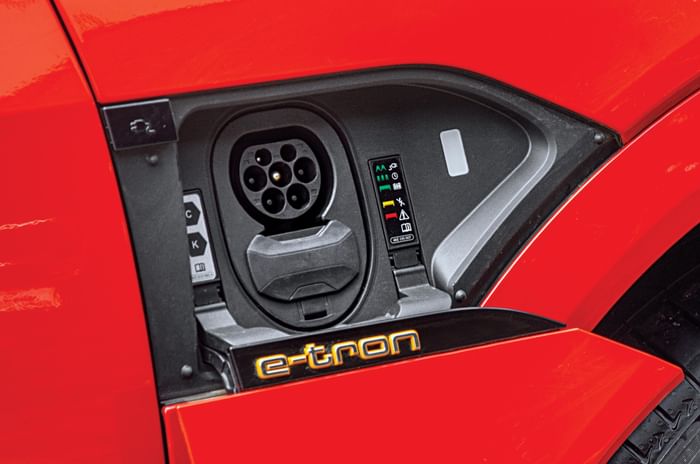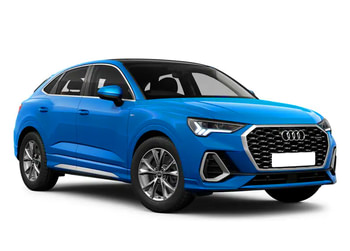Audi e-tron 55 quattro review, road test
Can this premium luxury, all-electric Audi SUV meet the company’s ambitious 200 units per year sales target?
Published on Jul 31, 2021 08:00:00 AM
81,629 Views
Follow us on

Charging sockets located on both sides, on the front fender.
In the ‘e-tron 55 quattro’ guise, this SUV draws power out of a 95kWh battery pack that supplies energy to two motors, one on each axle. In its sportiest setting, the e-tron generates 408hp/664Nm, 184hp at the front axle and 224hp at the rear. But in other modes, the e-tron makes 360hp/561Nm (170hp in the front and 190hp at the rear). The part-throttle rolling responses from standstill are so nice and gentle, that you’ll even forgive Audi for not offering a standard creep function. Being an EV, of course, torque is served right from the get-go, acceleration is very brisk, and the throttle response is sharp. A mere flex of your right foot is enough to scoot past slow-moving traffic, with the type of gusto you’d least expect from a 2.6-tonne SUV. The smooth, yet consistent build up of speed and its instantaneous responses are very addictive. This all-electric SUV can be enjoyed without the slightest guilt about polluting the environment, thanks to its zero tailpipe emissions. Interestingly, through external speakers, the e-tron plays a whirring-like sound in order to alert pedestrians and other road users of its presence on the move.

Switch from D to S and this Audi unleashes the additional 48hp/103Nm in overboost mode, under hard acceleration. When driven flat-out, the 2.6 tonne e-tron gallops from 0-100kph in a blisteringly quick 5.58sec and pulls strongly till about 180kph, after which the acceleration graph tapers off. With your foot pinned to the floor, it will max out at 207kph, as suggested by our GPS-based test equipment.
As with all EVs, the e-tron has energy regeneration (where the motor acts as a generator and recuperates kinetic energy during off-throttle coasting and braking) and it has two settings, manual and auto. What’s really impressive is how intuitive and how natural the auto mode is when you lift off. It allows the car to coast in order to maximise the distance covered, or it will recuperate charge and decelerate the car, all based on the driving style and battery state. What’s more is that if you need to slow down a bit sooner, you can tug at the left paddle and momentarily increase the regeneration and braking feel. Conversely, if you feel the braking feel is too strong, tug at the right paddle to decrease the braking feel and regeneration.
In addition to auto mode, there’s an option to manually turn regeneration off, or set it to two preset levels, which keep retardation forces at 0.03g and 0.1g, respectively. Using level 1 is a good idea during continuous downhill descents while in stop-go scenarios, using the higher setting could be fruitful where the car will decelerate rather rapidly on lift off, considerably slowing you down. But it does not come to a full stop and thus one pedal driving (not using the brake pedal) isn’t possible.
As with most EVs, using the brakes first brings in motor retardation, and Audi states that 90 percent of the time it will be the motors alone that will provide deceleration. Even when you do use the brake pedal, the wheel brakes are only called to duty during rapid deceleration (above 0.3g force). What’s nice is that the blending of the motor and wheel brakes is smooth and very well done, you never really notice the point when the wheel brakes kick in.
Copyright (c) Autocar India. All rights reserved.


















.jpg?w=234&h=156&q=90&c=1)

Comments
Member Login
Personal Details
No comments yet. Be the first to comment.